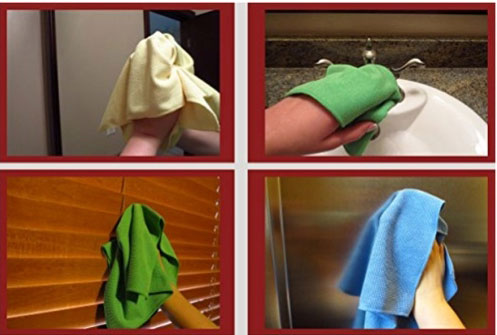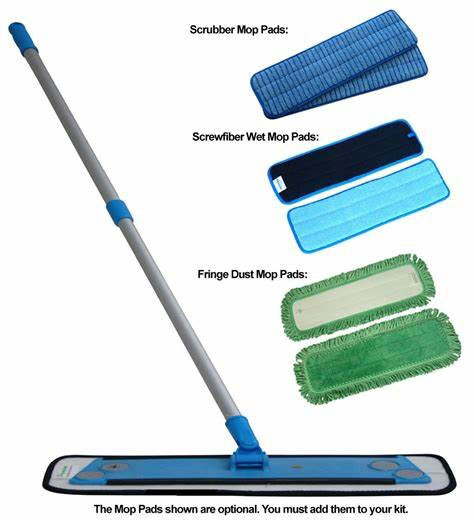
What is microfiber?
● Microfiber is a synthetic material. Microfiber used for cleaning is called split microfiber. When microfibers are split, they are 200 times thinner than a single human hair. These split microfibers become much more absorbent. They can remove large quantities of microbes, including hard-to- kill spores.
● Split microfiber quality varies. Microfiber that catches slightly on the surface of your hand is better quality. Another way to tell is to push a water spill with it. If the microfiber pushes the water instead of absorbing it, then it's not split.
● A microfiber cloth has the same surface area as a cotton cloth four times as large! And it is very absorbent. It can absorb seven times its weight in water!
● Microfiber products are also positively charged, meaning they attract negatively charged dirt and grease. These characteristics of microfiber allow you to clean surfaces without chemicals.
● A recent study of microfiber mop usage in hospitals showed that a microfiber mop head used with a detergent cleaner removed bacteria as effectively as a cotton mop head used with a disinfectant.
● Another advantage of microfiber is that, unlike cotton, it dries fast, making it hard for bacteria to grow in it.
● A laundering program is necessary if microfiber is used. This can include washing mops and cloths by hand, by machine, or using a laundering service. Laundering will help prevent the spread of germs from one surface to another (called cross- contamination).
● Microfiber cloths and mops are available in grocery stores, hardware stores, big box stores and online. Prices range from cheap ($1.00 or less, especially when bought in bulk) to mid-range ($3.00 – $5.00). There are differences in quality and durability. Higher priced cloths usually have smaller fibers and pick up more dirt and dust, but even the cheap ones get good results.
Why use microfiber tools for cleaning?
● They reduce exposure to chemicals in the environment and reduce pollution from cleaning chemicals.
● Microfiber is durable and reusable.
● Microfiber is made from synthetic fibers, usually polyester and nylon, which are not treated with chemicals.
● Microfiber mops are far lighter than their cotton counterparts, helping to save the user from neck and back injuries from heavy, water-soaked cotton mops.
● Microfiber saves the users up to $100.00 per year in cleaning costs because they are reusable and durable.
● Microfiber lasts longer than cotton; it can be washed a thousand times before losing its effectiveness.
How to use microfiber products?
● Surfaces: Use microfiber for cleaning counters and stovetops. The tiny fibers pick up more dirt and food residue than most cloths. They can be used with a third-party certified all-purpose cleaner, or a disinfectant.
● Floors: can be washed with microfiber mops. These mops are flat-surfaced and have easy- to-remove microfiber heads. Microfiber mop heads are lightweight and much easier to wring out, which results in a cleaner floor with much less water left on the floor to dry.
● Windows: with microfiber, only the cloth and water is necessary to clean and de-streak windows, no more toxic window cleaners! One cloth and water wash, and another to dry.
● Dusting: Microfiber cloths and mops trap much more dust than cotton rags, which makes the job faster and easier.
Cleaning and maintenance
● Wash and dry microfiber separately from all other laundry. Because microfiber has a charge, it will attract dirt, hair and lint from other laundry. This will reduce the the effectiveness of the microfiber.
● Wash heavily soiled microfiber cloths and mop heads in warm or hot water with detergent. Lightly soiled cloths can be washed in cold, or even on the gentle cycle.
● Do not use fabric softener! Fabric softeners contain oils that clog up microfibers. This makes them less effective during your next use.
● Do not use bleach! This will shorten the life span of the microfiber.
● Microfiber dries very fast, so plan on a short laundry cycle. You can also hang items up tp dry.
● Be sure to clean microfiber cleaning cloths after every use. Use color-coded cloths for different areas of your facility, so you don't transfer grems from one place to another.


Copyright © Changshu Power Clean Co., Ltd. All Rights Reserved Sitemap